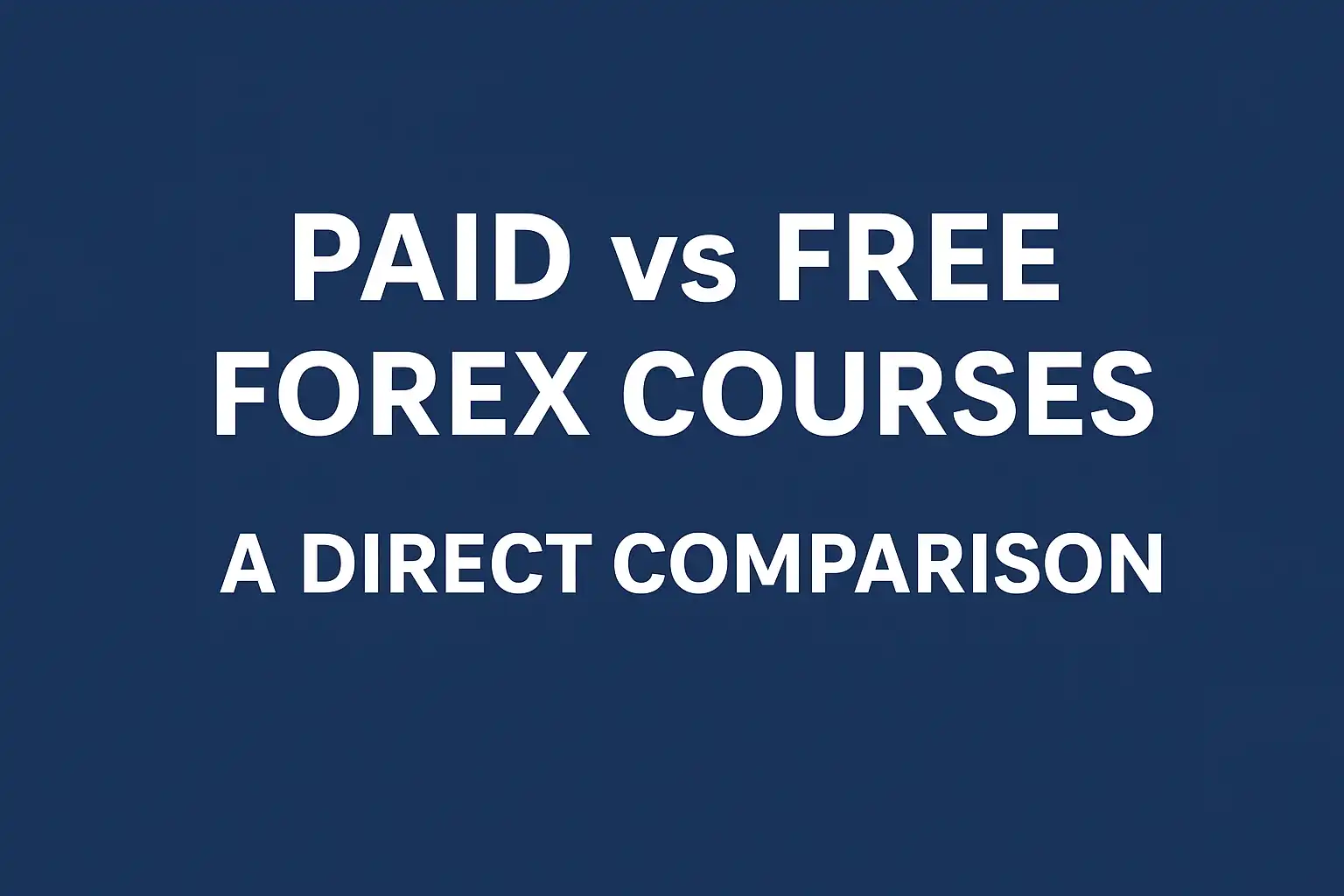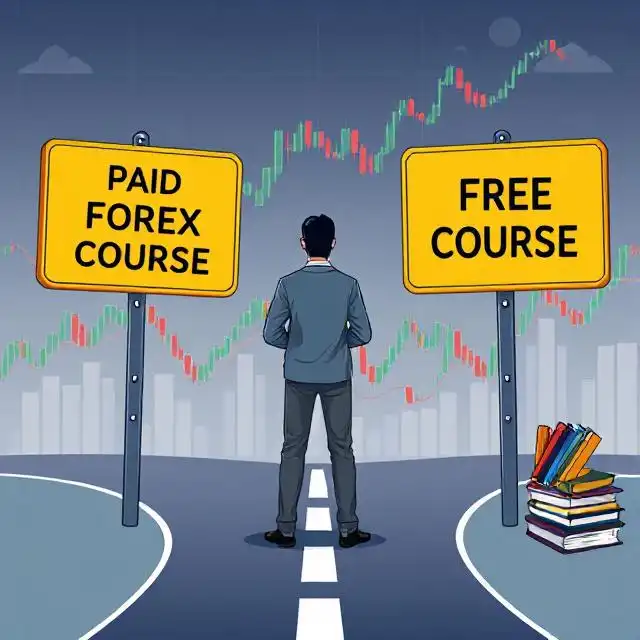Introduction
Forex trading has become one of the most attractive financial markets for both beginners and professionals. But before you risk real money in this $7 trillion-a-day market, education is essential. The big question for aspiring traders is: should you invest in paid Forex courses, or stick to the vast collection of free Forex education available online?
Both options come with advantages and disadvantages. Free courses provide accessibility, but paid courses often claim to deliver structured learning, mentorship, and advanced strategies. This article breaks down the real value of Forex education, compares Forex paid vs free training, and helps you make an informed decision.
Throughout this guide, we’ll also recommend helpful internal resources from Greg Forex, where you can explore tools, systems, and trading insights designed to make smarter trading decisions.
Why Forex Education Matters
Before comparing paid vs free Forex training, let’s understand why education matters in Forex:
- Risk Management: A strong foundation teaches you how to protect your capital.
- Technical Analysis: Learning to read charts, patterns, and indicators is vital.
- Trading Psychology: Courses emphasize discipline and emotional control.
- Strategy Building: Proper education helps traders create and test strategies.
For a deeper dive into tools that complement your learning, check out our forex trading systems.
Free Forex Courses: Advantages and Limitations
Advantages of Free Forex Education
- Accessibility: Anyone can start learning without spending money.
- Variety: Platforms like Babypips School of Pipsology offer structured beginner-friendly content.
- Flexibility: You can learn at your own pace.
Limitations of Free Courses
- Lack of Depth: Most free resources stop at beginner or intermediate levels.
- No Mentorship: Free training rarely includes live coaching or community support.
- Scattered Content: You may waste time searching across multiple sources.
If you’re starting from zero, pairing free resources with professional tools such as our Forex Indicators can give you a stronger foundation.
Paid Forex Courses: Advantages and Limitations
Advantages of Paid Courses
- Structured Learning: Step-by-step lessons with clear progression.
- Mentorship & Support: Access to trainers, Q&A sessions, and feedback.
- Advanced Strategies: Many cover algorithmic trading, smart money concepts, and real market case studies.
- Accountability: Payment often motivates students to complete the course.
Limitations of Paid Courses
- Cost Barrier: Some courses cost hundreds or even thousands of dollars.
- Quality Variation: Not all paid courses deliver real value; scams exist.
- No Guaranteed Success: Even the best course cannot replace practice and discipline.
For reliable tools that enhance your paid training journey, check out our Forex EAs and Systems.

Paid vs Free Forex Courses: A Direct Comparison
| Factor | Free Forex Courses | Paid Forex Courses |
|---|---|---|
| Cost | Completely free | $100 – $2000+ depending on provider |
| Depth of Knowledge | Beginner to intermediate | Beginner to advanced, strategy-focused |
| Mentorship | None | Often included (1-on-1 or group sessions) |
| Structure | Scattered, self-paced | Well-structured, progressive learning path |
| Community Support | Limited (forums, YouTube comments) | Dedicated communities, private groups, or Slack/Discord |
| Certification | Rarely offered | Frequently includes a certificate of completion |
| Risk of Scams | Low, but inconsistent information | Higher risk; must choose trusted providers |
| Value for Beginners | Excellent starting point | Better for serious traders seeking long-term skills |
| Value for Pros | Limited | High – especially for mastering advanced techniques |
Which Option Provides More Value?
The answer depends on your trading goals and budget:
- For Beginners: Free resources like Babypips, Investopedia, and YouTube channels are often enough to understand basics. Supplement them with demo accounts and free trading tools.
- For Intermediate/Advanced Traders: Paid courses can accelerate learning, especially if you want mentorship, structured strategies, or professional coaching.
Explore our Forex Blog for free trading insights, and visit our Products if you’re ready to pair education with real trading tools.
Red Flags: Avoiding Forex Course Scams
The Forex industry attracts scammers, especially in paid training. Watch out for:
- Unrealistic Promises: Claims like “guaranteed profits” or “double your money overnight.”
- No Transparency: Lack of course outline or trainer credentials.
- Pushy Sales Tactics: Urging you to buy immediately without trial access.
Before purchasing, always research reviews on trusted sites like Trustpilot or Forex communities.

How to Choose the Right Forex Course
- Check Reviews and Testimonials
- Evaluate Trainer Credentials
- Look for Practical Application (live trading examples, not just theory)
- Compare Cost vs Value
- Check for Lifetime Access or Updates
Our detailed article on Forex Training and Mentorship explains more about choosing the right program.
FAQs on Paid vs Free Forex Courses
1. Are paid Forex courses worth it?
Paid Forex courses can be worth it if they offer mentorship, advanced strategies, and practical application. However, beginners can often start effectively with free education.
2. Can I become a successful trader using only free Forex education?
Yes, many traders started with free resources. However, your progress may be slower without structured learning or mentorship.
3. How much should I pay for a Forex course?
A reasonable paid Forex course typically ranges between $200 – $800. Anything above should offer extensive mentorship or specialized training.
4. What is the biggest risk of paid Forex courses?
The biggest risk is falling into scams that overpromise and underdeliver. Always research before purchasing.
5. Should I combine free and paid Forex education?
Yes. Many successful traders recommend using free resources for basics and investing in paid courses for advanced strategies and mentorship.
Conclusion
When it comes to Forex paid vs free training, the choice ultimately depends on your goals. Free resources are perfect for beginners who want to learn without risk. Paid courses, on the other hand, provide structured learning, mentorship, and advanced insights that can accelerate your journey toward consistent profitability.
At Greg Forex, we provide affordable tools and trading systems to complement your learning—whether you choose a free or paid path. Pair your education with the right tools and strategies, and you’ll be better prepared for the challenges of Forex trading.




